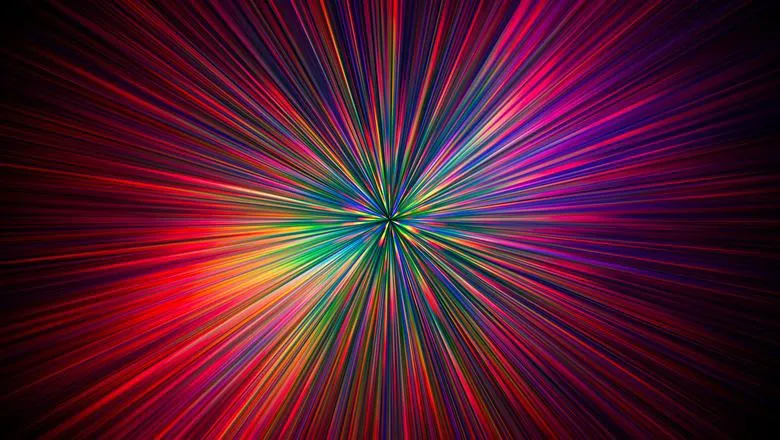The entirely new structure of light could help drug developers see their work more clearly than before.

An entirely new structure of light is helping to measure chirality in molecules more accurately and robustly than ever before, in a major potential step for the pharmaceutical industry.
Published in Nature Photonics, a team from King's College London and the Max Born Institute have created an entirely new structure of light that traces out a chiral curve over time. This chiral curve has different shapes at different points in space, forming a vortex structure. By interacting with chiral particles it moves through over time, the new 'chiral vortex' provides an accurate and robust form of measurement.
Chirality is a property of asymmetry important in several branches of science including pharmacology. Some molecules, like human hands, come in couples: they have a 'right-handed' and a 'left-handed' version, which are mirror versions of each other, but cannot be placed on top of each other to look the same.
This 'handedness' of the molecule (its chirality) can determine how it interacts with biological systems like the human body. In the 1950s, the chiral drug thalidomide was given to pregnant women to combat symptoms of morning sickness during pregnancy. The drug was distributed in a 'racemic' form, containing equal amounts of right-handed and left-handed molecules. By the time it was discovered that its right-handed version caused birth defects, tens of thousands of children and mothers had already been affected.
With our new method, a tiny excess in the concentration of either mirror twin can be detected... In cases like thalidomide, we know this is enough to make a life-changing difference."
Dr Nicola Mayer
By testing the chirality of molecules used in medicine, drug developers can catch treatments that could cause harm before they reach shelves, and the detection of chirality is a fundamental issue in biology and chemistry. Optical methods which use light for chirality detection are preferred by chemists because they are easier and less invasive than chemical methods. However, these face a number of challenges, including the need for large sample sizes to accurately identify left-handedness or right-handedness, which can get very expensive.
The new research introduces a completely new structure of light: the electric field of the light traces out a chiral curve over time, with a handedness that changes as you go around the beam. This spatial variation of handedness then creates a 'chiral vortex'.
When chiral molecules interact with this vortex, they emit photons through a process called high-harmonic generation (winner of the Nobel Prize for Physics 2023) in a recognisable pattern that can be spotted by an experiment.

When the molecule's handedness is switched, the corresponding pattern rotates in space. This allows for a more accurate detection of the handedness of the sample, when compared to standard methods as they rely on the comparatively weak magnetic field of the light which produces a far weaker signal.
Dr Nicola Mayer, postdoctoral researcher at the Max Born Institute and incoming Marie Skłodowska-Curie Actions Research Fellow at King's College London, and author of the study, said "Traditional measures of chirality have struggled to identify the concentration of right- and left-handed molecules in samples containing almost equal amounts of both. With our new method, a tiny excess in the concentration of either mirror twin can be detected, such as when the sample is 49% right-handed and 51% left-handed. In cases like thalidomide, we know this is enough to make a life-changing difference.
"By focusing on the detection of a rotating pattern of the light emitted by the molecules, it is a lot easier to sense and interpret minor differences in the handedness of dilute samples. Furthermore, the vortex nature of the laser beam we designed means the signals we receive are robust against the common pitfalls of chirality experiments in the lab, like fluctuations in the intensity of the light, empowering more people to carry out this work.
This understanding can lay the groundwork for shaping the behaviour of electrons and even eventually influencing chemical reactions with light."
Dr Nicola Mayer
"These signals can also provide a snapshot into how electrons move inside molecules at their natural speed, this understanding can lay the groundwork for shaping the behaviour of electrons and even eventually influencing chemical reactions with light."
The team also hope that the chiral vortex could eventually expand the processing power of quantum computers by increasing the amount of data individual 'quantum bits' can carry, by imprinting left- or right-handedness upon them like binary code.








